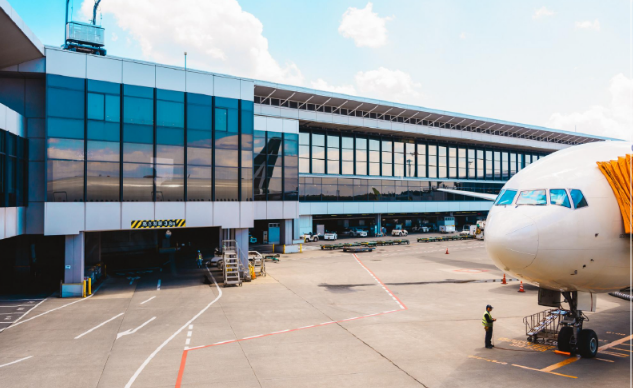Traveling through an airport can be an exciting yet overwhelming experience, especially when navigating through different airline terminals. Whether you are a seasoned traveler or flying for the first time, understanding how terminals operate can help you save time and reduce stress. From check-in counters to security checkpoints and boarding gates, airline terminals serve as the central hub for passengers, ensuring a smooth transition from arrival to departure. With the growing complexity of airport infrastructure worldwide, knowing how to efficiently move through a terminal can make a significant difference in your travel experience.
What Are Airline Terminals?
An airline terminal is a designated section of an airport where passengers check in for their flights, go through security screening, access airport lounges, shop at duty-free stores, and board their flights. Large international airports often have multiple terminals, each assigned to different airlines or routes, such as domestic and international flights. The layout and facilities of each terminal can vary significantly, ranging from basic amenities to luxurious lounges, shopping centers, and entertainment zones.
Airports such as London Heathrow, Dubai International, and JFK Airport in New York have complex terminal structures with multiple transportation options, including shuttle trains, buses, and underground walkways. Understanding your specific airport terminal before arrival can save you time and help you locate important services like baggage claim areas, rental car desks, and connecting flight gates. If you need detailed information about a specific airport, airline-terminals is a great resource that provides terminal maps, facilities, and transit information for major airports worldwide.
Key Facilities and Services in Airline Terminals
Most modern airline terminals are designed to provide travelers with a comfortable and efficient experience. Here are some of the essential facilities and services you can expect in major airport terminals:
1. Check-in and Baggage Drop
Upon arrival at the airport, passengers must check in for their flights either at the airline’s counter or through self-service kiosks. Many airlines now offer mobile check-in options, allowing travelers to obtain their boarding passes digitally and drop off their luggage at dedicated bag-drop stations. Some airports also provide curbside check-in for added convenience.
2. Security and Immigration Checkpoints
Passing through security is a crucial step before entering the departure lounge. Passengers are required to undergo screening for prohibited items, and international travelers must clear immigration and customs checkpoints. With technological advancements, many airports are introducing automated e-gates and biometric facial recognition systems to speed up the process.
3. Lounges and Rest Areas
For business travelers and frequent flyers, airport lounges provide a comfortable space to relax before a flight. These lounges offer premium amenities such as complimentary food and beverages, high-speed Wi-Fi, shower facilities, and private workstations. Access is typically available to business class passengers, elite airline members, or through lounge memberships like Priority Pass.
4. Shopping and Dining
One of the highlights of modern airline terminals is the vast selection of shops and restaurants available to passengers. Duty-free stores offer tax-free shopping on luxury goods, perfumes, electronics, and alcohol, while high-end fashion brands have boutiques in major international airports. Travelers can also enjoy a variety of dining options, from quick-service fast food to gourmet restaurants.
5. Wi-Fi and Charging Stations
Staying connected is essential for most travelers, and airports now offer free Wi-Fi throughout their terminals. Charging stations and power outlets are available in many waiting areas, allowing passengers to keep their devices powered up while waiting for their flights.
6. Transport and Connections
For travelers with layovers or connecting flights, efficient airport transportation is crucial. Many major airports offer shuttle services, monorails, or underground trains to transfer passengers between terminals. Some airports also provide in-terminal hotels or sleeping pods for travelers with long layovers.
How to Navigate an Airline Terminal Efficiently
Navigating a busy airport terminal can be daunting, but with a few smart strategies, you can make the process smoother and stress-free:
Check Your Terminal in Advance: Before heading to the airport, confirm your airline’s designated terminal and gate number. Some airports have multiple terminals that require additional transit time.
Arrive Early: Airlines generally recommend arriving at least two hours before domestic flights and three hours before international departures to allow time for check-in, security, and potential delays.
Use Mobile Check-in: Save time by checking in online and downloading your boarding pass before arriving at the airport. This allows you to proceed directly to security if you are traveling with carry-on luggage only.
Follow Airport Signage: Airports have clear signs in multiple languages guiding passengers to check-in counters, security checkpoints, baggage claim areas, and boarding gates. Paying attention to these signs will help you navigate more efficiently.
Keep Important Documents Accessible: Have your passport, boarding pass, and any required visas readily available to avoid last-minute searching when going through security or immigration.
Pack Smartly: Follow airline baggage regulations and pack your carry-on wisely. Liquids should be in containers of 100ml or less and placed in a clear plastic bag for easy inspection at security checkpoints.
Use Airport Apps: Many airports have their own mobile apps that provide real-time flight updates, interactive terminal maps, and information on amenities. These apps can be extremely useful for first-time travelers or those navigating large airports.
The Future of Airline Terminals
As air travel continues to evolve, airports worldwide are implementing new technologies to improve the passenger experience. From biometric boarding and AI-powered security screening to contactless check-in and sustainable airport designs, the future of airline terminals is focused on efficiency, safety, and convenience.
Airports like Singapore Changi and Hamad International Airport in Doha are already setting new standards with high-tech features, including facial recognition for seamless passenger movement, smart baggage handling systems, and AI-driven customer service robots. Additionally, many airports are investing in sustainability initiatives, such as solar energy, waste reduction programs, and eco-friendly terminal designs.




Write a comment ...